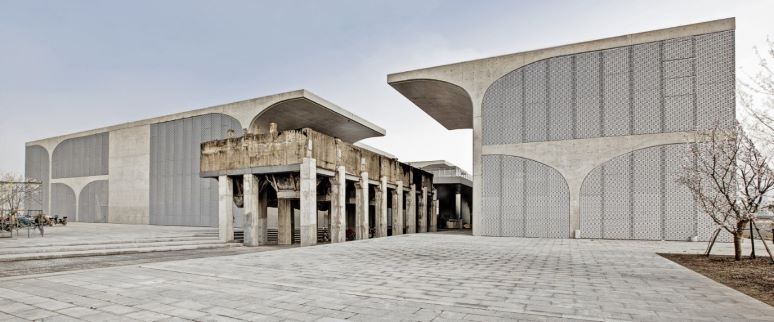Huangpu River waterfront brings brand new look to Shanghai’s urban scenery
By Jiang Hongbing, People’s Daily
Photo shows the Long Museum transformed from a coal port along Huangpu River. (Photo courtesy of the Long Museum)
The waterfront stretching 23 kilometers along the banks of Shanghai’s Huangpu River is now the favorite leisure space of Shanghai citizens. The brand new landmark of Shanghai, which took 15 years to construct, serves as an important link between the metropolis’ economic center and densely populated areas.
Forty years ago, this place was occupied by roaring engines of major state-owned enterprises. Now, gigantic factories and tower cranes have been transformed into public buildings and incorporated into the urban landscape, inheriting the history of the city.
The narrow piece of land was the largest energy supply and industrial base of modern Shanghai. Setting numerous records in China’s history of industry, it is hailed a “corridor of modern Chinese industrial civilization.”
The former industrial belt was home to a number of enterprises, wharfs, plants and warehouses that created 600,000 jobs, and its industrial output once accounted for a quarter of Shanghai’s total. It was the birthplace of many renowned Chinese brands. Besides, Shanghai’s water, power and gas supplies also came from there.
“Factories sat along the river in belt shapes. Raw materials and products were handled at wharfs. We worked at workshops, and urban life stopped half a kilometer away from the river,” said 89-year-old Huang Baomei, who was once a model worker of a state-owned textile factory located on the former industrial belt. She still has a fresh memory of the place which now has turned into the modern waterfront. “During rush hours, the buses were so crowded that they couldn’t even close the doors. Roadside diners were still lighted when workers went home from night shift,” she said.
However, many factories were closed due to the transformation of the city and restructuring of industries in 1990s, and a large number of labor-intensive enterprises, such as textile factories, moved production lines to other areas, leading to a drastic fall in the number of workers in the region, from a peak of 600,000 to just 60,000. Ever since, weed had grown wild in waste plants where rust began to encroach workshops and machines.
No one had ever expected that the deserted area would become a major highlight and unique advantage of the waterfront.
In 2002, Shanghai won the bid to host the Expo 2010, and both sides of the Huangpu River were chosen as the site to host the event. In the same year, the city initiated comprehensive development of the Huangpu River banks and elevated it as a major strategy.
The construction of the public space on the waterfront was more like a delicate archaeological discovery and restoration.
The sludge tanks and large criss-cross pipes at Shanghai Soap Factory, the predecessor of what is now Shanghai Soap Co., Ltd., were turned into a leisure space for reading, conversation and relaxation by architect Zhang Bin. Liu Yuyang, another architect, removed the roofs of the old warehouses at a boiler plant, transforming the abandoned buildings into a perfect space for exhibitions. Designer Guo Yifeng took a long time along the river banks observing the growth of different plants to finalize greening plans.
Cases like these are common along the two banks of the Huangpu River waterfront. All the details of the construction and design had been polished again and again by excellent designers from both home and abroad.
The waterfront, spanning between Yangpu and Xupu bridges, opened to public at the end of 2017. It is now a favored shooting location for photography enthusiasts, an internet-famous site for young generations, and a perfect place for joggling and other sports. Besides, it also serves as an ideal place for outdoor activities of children and friends gathering.
For Huang, the waterfront is a piece of nostalgic land covered by both flashbacks and drastic changes, as the diligent model worker once experienced sorrow when the former industrial belt went rusty, and is now feeling happiness living in a modern riverside house.
“I’m proud of having witnessed the giant strides of this place in the past decades,” Huang said.













